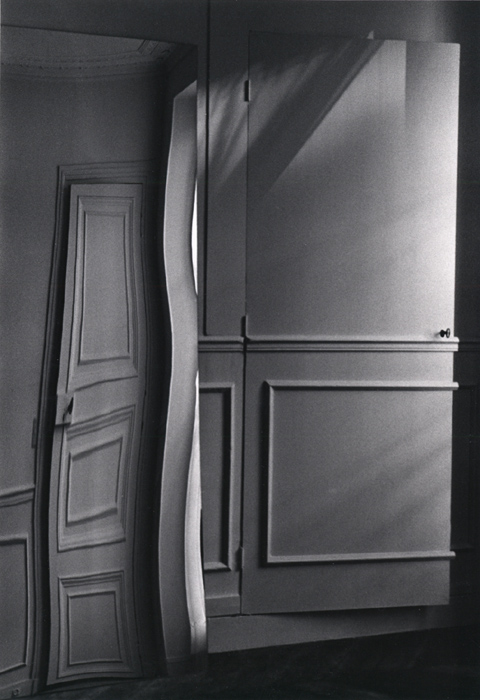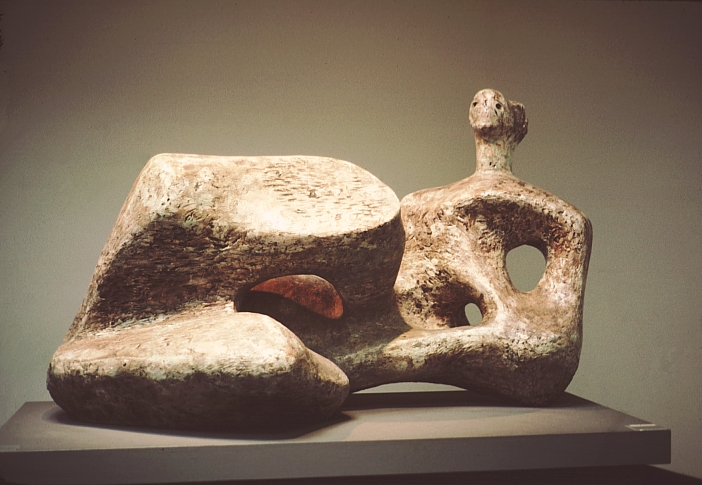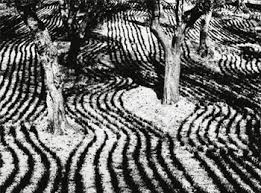Ernst Haas 'Droplets on an Autumn leaf' 1964
Nature provides its own lenses to bring veins of the leaf into closer view. The lenses are droplets of water that appeared on the leaves in the cool mist of September.
Ernst Haas 'Pine Needles in Ice' 1967
Autumn turns to Winter. The frozen bubbles captured and preserved before they reached the surface. Haas used his camera to peer closely at ordinary subjects to find beauty. Pine needles, positioned towards the right hand side of the frame, divide up the composition. Bubbles form circles of different sizes to contrast with the vertical needles. A photograph preserves a moment in time, frozen forever. Frost and ice also affects the process of time.
Simple net sails of a boat overlap to create a delicate pattern.
Still from Alfred Hitchcock's - 'Champagne' 1928 - shot through the bottom of a wine glass.
This is a strange still from an early silent Alfred Hitchcock film. It is taken from his 1928 film 'Champagne' were he experimented with a camera lens placed inside a giant champagne glass. The glass fills with liquid and is tipped as if we, the viewer, are drinking from it and seeing through it. We can just make out a crowd and couple dancing.
Still from Hitchcock's 'The Ring' 1927 - a moving reflection in a stream
During the filming of Hitchcock's early silent film The Ring (1927) he experimented with trick photography. In the above still we see a reflection of a couple in a stream. When the water ripples the image itself ripples and the figure go in and out of abstraction.
Stills from Hitchcock's 'The Ring' 1927 - seen from the viewpoint of a drunk man
In these two scenes we see what a drunk sees and the world appears distorted. This could emulate the effect of drink but also be a metaphore for viewingt he world through the bottom of a glass. Dancers distort until they are unrecognizable. Hitchcock uses blurring and mirrors to distort the image and create a sense of disorientation. The keys of a piano appear elongated as if seen through a fairground mirror. This visual experimentation is a key aspect of Hitchcock's Cinematic style.
Andre Kertesz - Paris, Door Distortion, July 29, 1984
Andre Kertesz ‘Distortion 144, Paris’ 1933
Andre Kertesz ‘Distortion 147, Paris' 1933
These strange distorted images are by André Kertesz. ‘Distortions’ (1933) is a series of photographs of women reflected in distorting carnival mirrors that transform them into dreamlike creatures.
Salvador Dali 'Soft Construction With Boiled Beans (Premonition of Civil War)',1936, oil on canvas.
The deformed melting figures of Dali's painting mirrors the distortions that appear in Kertesz's photographs. This painting is one of only a handful in which Dalí turned his attention to the tragedy that beset his homeland on July 17, 1936, when General Francisco Franco led a military coup d'état against the democratically elected Popular Front government. The artist's savage vision of his country as a decomposing figure tearing itself apart preceded the outbreak of the Spanish Civil War and thus prophetically foretold the atrocities committed during this bloody conflict. Other artists who have focused on the Spanish Civil War are Picasso (Guernica), Guillermo del Toro (Pan's Labyrinth) and, during the earlier civil war, Goya (Disasters of War). Dada Photomontage distorted the human form immediately after the first world war. As well as having surreal qualities these images, like the Dada Photomontages could be a reaction to the human horrors of the first world war and the rise of 1930's fascism.
Henry Moore. Working Model for Reclining Figure, 1957. Bronze.
Henry Moore emerged in the 1920s as a radical, experimental and avant-garde figure and was rapidly established as the leading British sculptor of his generation. His principal and enduring subject was the human body, through which he believed ‘one can express more completely one’s feelings about the world than in any other way’. Moore also reflected in his work his reaction to two world wars. The smooth quality of these images are similar to the effect of melting ice and how is distorts as it transforms back into liquid.
Paul Caponigro 'Frost Window No.2' 1961
A picture of frost crystals on a bedroom window makes a tapestry out of a mixture of pattern and texture. Positioning his view camera about 30cm from the glass, the photographer stopped the lens all the way down to f32 so as not to loose the dark trees in the background.
Mario Giacomelli
Mario Giacomelli
The patterns created by the grooves in the earth have been captured by Mario Giacomelli. Giacomelli was a true local, tied to his region, town, and its rhythms and traditions. He was self taught and even in his artistic expression he was influenced by his homeland. We can see this in his landscapes showing signs of man’s labour, with folds like wrinkles on a person’s hands, landscapes that speak of faces and things living in the soul. The story goes that Giacomelli would borrow his neighbors tractor to make the tracks go in another direction to create the perfect graphic, semi abstract photograph. He printed all his work in a trade mark high contrast style. For Giacomelli, photography was above all love, the image telling a poem of the heart which continues to surprise and move us (he originally trained as a poet and a painter).
Ernst Haas
Irvin Penn
Droplets of water have been caught in the delicate stems of a dandelion clock. The flower has been backlit to create a simple silhouette. There is a contrast between the sharp translucent circular water droplets and the soft tonal quality of the silhouetted stems.
Adam Fuss 'Untitled' Photogram 2007
Adam Fuss has made a photogram by getting a snake to more through water. The patterns created by the creature moving through the water has been captured directly onto the photographic paper.
M.C. Escher 'Rippled Surface' 1950
M.C. Esher has created the illusion of the rippling surface of water. He has carved into a surface, inked it up and taken a print from it. The raised areas of the surface have left a mark - creating the black ripple effect. There our elements of science and mathematics to Escher art and a fascination in optical illusions.
'Hand with Reflecting Sphere' M. C. Escher 1935
M C Escher
M C Escher























